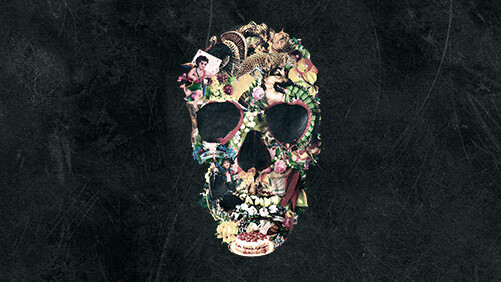
What will we be wearing in the future?
Let’s ask the experts!
Predictions about the future of fashion usually focus on the next season and are done by trendwatchers and fashion designers. Let’s look a bit further ahead and ask technology experts how we will be dressed in the future.
According to science fiction movies, we will all be wearing the same spandex suits, preferably in silver. Everyone looks the same and wears the same outfit every day. The advantage of a uniform is not having to think about what you’re wearing, leaving your processing power for more important stuff. Steve Jobs famously wore a black turtleneck and Einstein is known to have copies of the exact same outfit and wore the same clothes every day of the week “to simplify his life”. But everyone in the same outfit is also boring. And mind you: not everyone looks good in silver spandex.
Will science and technology make us more creative? So far, if anything, technology has made us more comfortable. We expected clothes with built-in technology such as camera’s, phones and other communication devices. But if you look at what people are wearing today, the most important innovation is in the materials: weather-resistant, elastic, and breathable. I wear a ski suit in -20‘C without ever feeling cold (imagine what skiing in the 1900’s must have been!) and water-resistant coats are not the sweaty pieces of plastic they used to be. And those Star Trek suits? Those look really comfortable.
So what will we be wearing in the future? Will we all wear our silver-spandex-all-weather-resistant suits or will we look different? Let’s ask the experts.
Mark Earls @herdmeister
Best selling author of ‘Herd’ and expert on consumer behaviour and behavioral change.
It’s unlikely that we’re all going to end up dressing the same (unless we all join Starfleet) but not for the reason that you might think – our in-built drive to express our unique individuality as people to those around us.
No, like so many things, the way we dress tends be a social choice, shaped by the behaviour of those around us. You might imagine that this might lead to conformity and uniformity but – because of two things: first, the range of choices available (more and more of us will live in uber-urban settlements, and cities always offer novelty); second, the amazing ability of copying to introduce error and thus novelty back into the population.
At the same time, the tribal side of our social nature will tend to lead us to dress more like our immediate peers (our “in-group” as the sociologists call it) and less like those beyond that group. We already see this in a whole host of consumer behaviours and many social scientists see this as the explanation for the political “big sort” that US politics has created – opposing and mutually misunderstanding groups of individuals who become more and more extreme.
Ryan Holiday @RyanHoliday
Media strategist and best-selling author of ‘Trust me I’m Lying’. Director of marketing at American Apparel.
I think you’re seeing technology increase expression, increase the turnover of the fashion cycle and not the opposite. As people can customize and personalize their clothes cheaper and more easily, is it really likely that we’re going to choose to wear the same uniform? More and more people work from home, the office environment is dying. Thankfully, I don’t see homogenization coming as a fashion trend.
Ken Segall @Ksegall
Former Apple ad guy. Creative consultant, blogger and best selling author of ‘Insanely Simple – The Obsession that drives Apple’s Success.’
Until humanity figures out how to lose the extra poundage, I’m betting that slim-fit spandex doesn’t catch on. It’s the nature of human beings to express individuality, and evolving technology only helps us do that better. No doubt we’ll soon be wearing our technology — but we’ll never wear a uniform.
Patrick Llewellyn @99designs
CEO at 99designs
I can see the future where fashion evolves in two seemingly divergent directions: total comfort and complete self-expression. We’ve already seen fashion embracing human comfort — look at the trend toward clothes that let the body breathe with hidden vents and sweat-absorbing microfibers and shoes that mimic the naked human foot. This will be coupled with a move toward total self-expression — technology will allow us to wear our mood on our sleeves by modifying our silhouette and color palettes with the blink of an eye…
Louisa Heinrich @Customdeluxe
Strategist, designer and instigator. Working in digital design since it was invented.
Many visions of the future imply a level of uniformity, or conformity – we will be surrounded by content, screens, and information. However, everything will be tailored to us. Someone will have made the decision of what we need to watch, listen to, understand, and so forth. The concept of uniformity in fashion can be read a few ways – on the one hand, it might imply the same kind of conformity, where someone somewhere has made a decision about what we’re all wearing, and we all go along with it. On the other hand, it could be read as a utopian desire to be free from the trappings of our ego, free to do more good in the world – in Star Trek terms, instead of worrying about what to wear in the morning, we can think about how to save that planet over there.
I think the reality is that as humans, we do best when we are free to be ourselves – I see evidence for this in the increasingly varied ways that people interact with, do business with, communicate with one another through technology. We are not becoming more conformist, we are becoming more diverse – more true to our individual selves and our communities, which technology is enabling. I think self-expression and innovation go hand in hand – one looks inward and the other outward. Fashion, for me, is a way of expressing my inner self, and I suspect this is true for many people. Today, we already see young people wearing fashion from the 30s, 60s, 80s and 90s as well as what’s trendy now – it’s becoming increasingly acceptable to simply wear what you want to wear, what makes you feel good. I suspect (and rather hope) that this trend will continue, and that fashion will become an even purer means of self-expression. We’ll all be dressed exactly like ourselves, which may or may not mean wearing a silver jumpsuit. :)
Scott Smith @Changeist
Futurist, writer, educator and researcher. Founder of Changeist.
Historical depictions of the future do always seem to forecast a frightening sameness to what we will be wearing—dull or shiny uniforms, with very similar fabrics, cuts and patterns, for example. Even if they don’t show jumpsuits or space suits (depending on how far back you go), depictions of everyday street clothes also have a homogenized feel—a dark 1940s inspired look in movies such as “Blade Runner” and “Gattaca,” for example. Some of this may be down to the implication that we will probably be living in a very mechanized, robotic, Big Brother world where we dress the same—like children—for our own good. It could also be a foreseen lack of resources, or lack of diversity of materials, for example.
In reality, we are actually seeing fashion coming into a new age of variety, not just of materials, but even in function. Not only are we able to produce an incredible array of synthetic materials and so-called smart fabrics through the application of nanotechnology, but we are already able to build other technologies into the fabric—such as light-conducting materials that can turn fabric into a display, or fabric embedded with fine sensors and flexible electronics that can sense body heat, heart rate, and so on. Throw on top of that the ability to 3D print “clothing,” integrate wearable technology such as computer chips, and even “grow” biological fabrics, and the arrow of variety seems to be pointing the opposite direction from monotonous or militaristic.
One of the important factors in these last few examples is that these are production processes—3D printing and “grown” clothing—that can happen locally, or even at home, adding that much more variety. These processes are a few years’ off from being mass market, but rapidly changing materials science, and the impact it will have on fashion and clothing, is already having an impact on Fashion Week runways, inspiring other designers to take up the challenge.
Pablos Holman @Pablos
Futurist, Inventor and Hacker
Your life has been shaped by so many mass market products that it is often hard to notice.
Ever notice how a t-shirt is mostly a big rectangle? You probably don’t know anyone who is a rectangle. This is because a rectangle can fit the average of everyone.
Nearly everything you own was made not for you, but for thousands of people who the world sees as being just like you. In fact, you are more unique and special than any snowflake – there is no other human who is identical to you.
Manufacturing processes like injection molding, clicker press, screen printing, and others all require expensive up front tool creation for each product. Those tools are only good for making one thing, so a lot of people need to buy the same thing.
Fashion is about expressing who we are. Usually, the best we can do is express which niche market we are in. Rollergirl, jock, hipster or fashionista.
Things aren’t going to be made for the masses much longer. They will be made for you. To fit you physically, to fit you culturally, to fit your individuality. You may still choose to wear a Yankee’s hat, but it won’t have an adjustable strap on the back – the size tag won’t show medium anymore – it will show your name instead. Your Louis Vuitton bag will have your initials in the logo and will be lined with a photo from your last vacation.
This is possible because general purpose robots like 3D printers will be used to manufacture things. Not to stick them in a warehouse or on a store shelf until you buy them, but at the moment when you click “buy now.” These things can embody every preference, every measurement, every unique thing about you.
This is important, because it erodes class distinction. It used to just be the royalty who could wear haute couture. Soon everyone will be able to wear what they want, not just what the lowest common denominator gives them.
Get the TNW newsletter
Get the most important tech news in your inbox each week.





